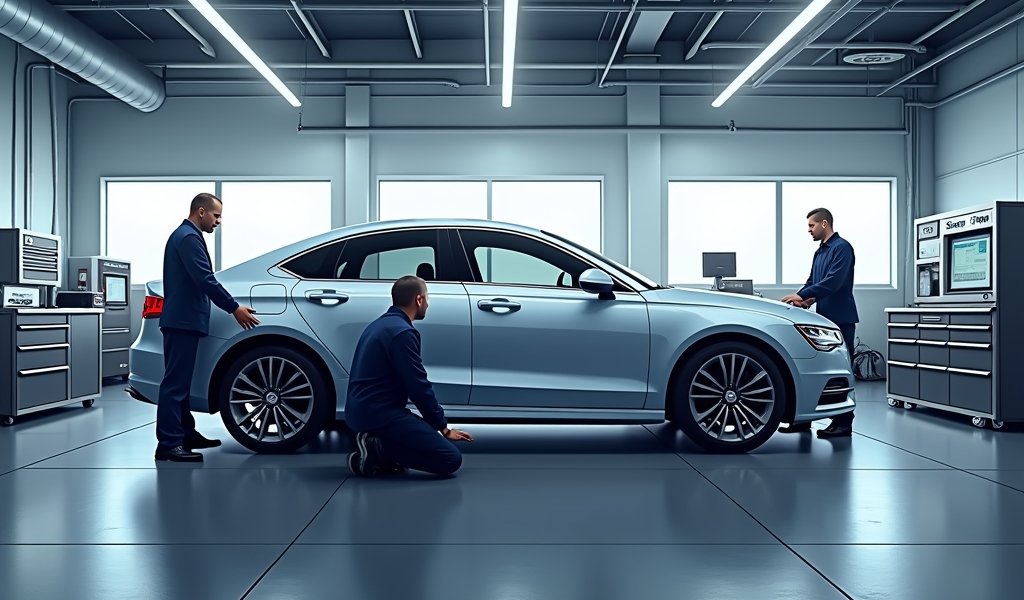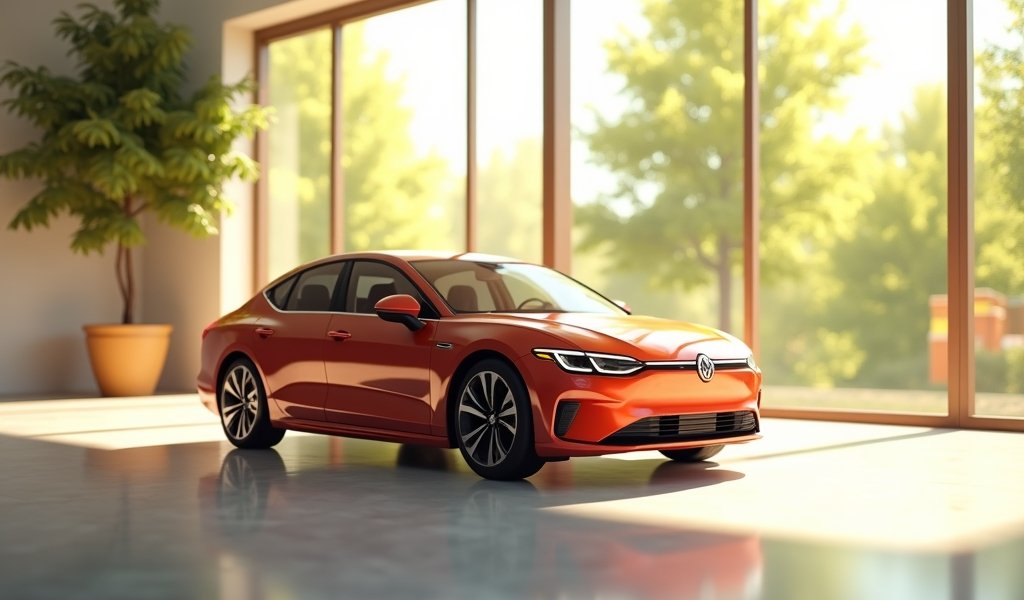Overview
This guide outlines five strategies for securing no down payment car loans: improving your credit score, finding specialized lenders, considering a co-signer, choosing depreciation-resistant vehicles, and negotiating favorable loan terms to offset higher interest rates. While zero-down financing typically costs more over time, it can be appropriate for those with excellent credit who need to preserve cash reserves, those qualifying for special promotions, or those facing transportation emergencies.
Table of Contents
- Understanding No Down Payment Car Loans
- Tip 1: Boost Your Credit Score Before Applying
- Tip 2: Research Lenders That Specialize in No Down Payment Options
- Tip 3: Consider Adding a Co-Signer for Better Approval Odds
- Tip 4: Choose the Right Vehicle for Long-Term Value
- Tip 5: Negotiate Loan Terms to Offset Higher Interest Rates
- When Zero-Down Financing Actually Makes Sense
- Conclusion: Driving Away Without the Down Payment
- Frequently Asked Questions
Understanding No Down Payment Car Loans
The allure of driving off the dealership lot without spending a dime upfront is undeniable. No down payment car loans make this possible, offering a path to vehicle ownership that doesn’t require thousands in savings. As someone who’s spent decades in the automotive financing world, I can tell you these loans aren’t just marketing gimmicks—they’re legitimate financing options that help many folks get behind the wheel when cash is tight.
But let’s be straight about something: financing 100% of a vehicle purchase shifts the financial equation. When you skip the down payment, lenders take on additional risk, and that typically translates to higher interest rates and stricter qualification requirements for you. The trade-off is clear—less money upfront means more money over the life of the loan.
Despite these challenges, with the right approach, no-money-down financing can be a sensible option. The key is understanding exactly what you’re getting into and having a strategic plan. Let’s pop the hood on this financing option and look at five proven ways to make it work for your wallet.
Tip 1: Boost Your Credit Score Before Applying
Your credit score becomes your most valuable asset when seeking a no down payment car loan. Think of it as your financial resume—it tells lenders whether you’re a safe bet. Most lenders offering zero-down options want to see scores of at least 680, with the truly competitive rates reserved for those sporting 720+ scores.
Before you start test driving your dream car, take these practical steps to buff and polish your credit profile:
- Pull your credit reports and dispute any errors (they’re more common than you might think)
- Pay down credit card balances to below 30% of your limits—this quick move can boost scores significantly
- Establish a 6-12 month history of on-time payments for all bills
- Avoid applying for new credit cards or loans in the months before your car loan application
The financial payoff for improving your credit score is substantial. On a typical $25,000 car loan with a 60-month term, bumping your score from the “fair” to “very good” range might slash your interest rate by 3-4%. That’s not pocket change—we’re talking about potential savings of $2,500 or more over the life of your loan.
Remember, your credit score heavily influences car loan approval and determines whether you’ll be paying premium rates or scoring a deal. According to Experian’s State of the Automotive Finance Market, the difference between average rates for deep subprime versus prime borrowers exceeds 10 percentage points.

Tip 2: Research Lenders That Specialize in No Down Payment Options
Not all lenders play in the zero-down financing sandbox, and those that do have their own unique rules. Instead of wasting time with applications destined for rejection, target your efforts toward lenders known for offering these programs.
In my years helping folks secure automotive financing, I’ve found these sources consistently more receptive to no down payment arrangements:
- Credit unions often provide more flexible lending criteria and rates 1-2% lower than traditional banks
- Online automotive lenders that specialize in various financing situations
- Manufacturer-backed financing programs, especially during end-of-model-year clearances
- Military-focused institutions like USAA or Navy Federal Credit Union for service members and their families
While hunting for these loans, keep your radar tuned for warning signs of predatory lending. Red flags include interest rates significantly above market averages, mandatory add-ons that inflate the loan amount, high-pressure sales tactics, or loan terms stretching beyond 72 months.
Always collect at least three different loan offers before making any decisions. This approach serves two purposes—it gives you negotiating leverage and provides a reality check on the rates and terms available to someone with your specific financial profile.
I recently worked with a client who received offers ranging from a reasonable 6.5% to an eye-watering 12.9% for identical loan amounts. That rate difference would have cost him over $4,000 in additional interest—money better spent on maintenance or fuel during the years of ownership.
Tip 3: Consider Adding a Co-Signer for Better Approval Odds
When your credit profile needs reinforcement, bringing in a co-signer can dramatically improve your chances of driving away with a no down payment loan. A co-signer essentially lends you their financial credibility, promising the lender they’ll step in if you can’t make payments.
The ideal co-signer brings these strengths to your application:
- Credit score north of 700
- Stable employment history showing reliability
- Debt-to-income ratio below 36%
- Sufficient income to cover the loan payments if needed
Before asking someone to co-sign, have a candid conversation about what’s involved. Your co-signer isn’t just vouching for you—they’re legally binding themselves to your debt. Late payments or defaults will damage their credit just as much as yours, and the loan will appear on their credit reports, potentially limiting their borrowing power.
If a co-signer isn’t an option in your situation, consider these alternatives:
- Save even for a minimal down payment (5-10% can significantly improve terms)
- Join a local credit union where membership might qualify you for special programs
- Explore manufacturer-sponsored first-time buyer programs
- Build credit with a secured credit card or small personal loan before applying
My colleague recently helped a customer who was initially declined for a no down payment loan despite a decent job. By bringing in his father as a co-signer, he not only secured approval but also qualified for an interest rate nearly 3 percentage points lower than his initial offer.
Tip 4: Choose the Right Vehicle for Long-Term Value
When you’re financing 100% of a vehicle’s cost, your choice of car becomes even more critical. Remember, you’ll start your ownership journey “underwater” on the loan—owing more than the car is worth the moment you drive off the lot. This negative equity position makes selecting a depreciation-resistant vehicle especially important.
Focus your search on vehicles with these characteristics:
- Models known for reliability and longevity (reducing repair costs)
- Vehicles with historically slower depreciation rates
- Certified pre-owned options with remaining factory warranties
- Cars with reasonable insurance premiums (always get quotes before purchasing)
From my decades in the garage and the financing office, I can tell you that Toyota Corollas, Honda Civics, Mazda3s, and Subaru Imprezas consistently offer excellent value propositions. These models typically hold their value better than average, have strong reliability records, and deliver reasonable fuel economy.
When evaluating potential purchases, calculate the total cost of ownership beyond just the monthly loan payment. Factor in insurance, fuel costs, typical maintenance expenses, and expected repairs based on reliability data. Ideally, your total transportation costs should remain below 15% of your monthly take-home pay to maintain financial balance.
Timing your car purchase strategically can also help you secure better financing terms. Dealerships often offer their most aggressive promotions during model year transitions or when meeting end-of-month or end-of-quarter sales targets.

Tip 5: Negotiate Loan Terms to Offset Higher Interest Rates
Without a down payment, you’ll almost certainly face higher interest rates. The good news? You can counter this disadvantage by strategically negotiating other aspects of your loan.
Here’s where to focus your negotiation efforts:
- Push for the shortest loan term you can comfortably afford—a 48-month term will cost less in total interest than a 72-month term, even at a slightly higher rate
- Ask about rate reductions for setting up automatic payments or paperless statements (many lenders offer 0.25-0.5% discounts)
- Plan to refinance after 12-18 months of on-time payments, when you’ve established payment reliability
- Consider gap insurance carefully—it’s often worth the cost when you have no equity in the vehicle
- Decline dealership-offered extended warranties and protection packages; if you want these, research third-party options that typically cost 40-60% less
One effective negotiation strategy I’ve recommended to many clients is accepting a slightly higher interest rate in exchange for a shorter term. For example, a 4.9% rate on a 48-month loan will often cost you less overall than a 4.2% rate on a 72-month loan for the same amount.
After securing your loan, make a plan to lower your car loan payments through eventual refinancing. Set a calendar reminder for 12 months after purchase to reevaluate your loan terms. By then, you’ll have established a positive payment history and potentially improved your credit score, making you eligible for better rates.
According to Federal Reserve data, consumers who refinance auto loans save an average of $56 per month—that’s nearly $700 annually that could go toward building a maintenance fund or paying down principal faster.
When Zero-Down Financing Actually Makes Sense
While I’ve highlighted the challenges of no down payment car loans, they can be appropriate and even advantageous in certain situations. As a mechanic who’s seen countless customers struggle with car buying decisions, I believe zero-down financing makes good financial sense when:
- You have excellent credit (720+) but need to preserve cash reserves for emergencies
- You qualify for special manufacturer promotions offering subsidized interest rates on zero-down deals
- The opportunity cost of using your savings exceeds the additional interest cost (like keeping money in investments earning higher returns)
- You face an immediate transportation emergency where reliable transportation for work outweighs the financial disadvantages
Even in these scenarios, I encourage customers to consider making even a small down payment when possible. Putting down just 5-10% can significantly reduce your negative equity period and often results in better loan terms.
I remember helping a nurse who needed reliable transportation for her hospital shifts after her old car died unexpectedly. With excellent credit but limited savings, a zero-down loan on a certified pre-owned Honda made perfect sense—it kept her emergency fund intact while providing the reliable transportation her career demanded.
Conclusion: Driving Away Without the Down Payment
Navigating the world of no down payment car loans requires more preparation and research than traditional financing, but when approached strategically, these loans can provide a path to vehicle ownership that works with your financial reality.
The five tips we’ve covered—improving your credit, researching specialized lenders, considering a co-signer, choosing the right vehicle, and negotiating favorable terms—form a roadmap to success in the zero-down landscape. By applying these strategies, you can minimize the additional costs typically associated with no money down financing.
Remember, the goal isn’t just to get approved for a loan—it’s to structure a deal that supports your overall financial health while putting you behind the wheel of a reliable vehicle. Sometimes that means waiting a few months to improve your credit score, or considering a more practical vehicle than the one that initially caught your eye.
As both a mechanic and financial advisor, I’ve seen that the most successful vehicle ownership experiences start with making smart choices at purchase time. When the financial foundation is solid, you’re better equipped to maintain your vehicle properly and avoid the stress of being stretched too thin by excessive car payments.
Whether you’re considering a no down payment car loan out of necessity or convenience, these proven strategies will help you secure terms you can live with today and build toward a stronger financial position tomorrow.
Frequently Asked Questions
What credit score do I need for a no down payment car loan?
Most lenders require a minimum score of 680 for zero-down financing, with the best rates reserved for scores above 720. Lower scores may still qualify but expect significantly higher interest rates as compensation for the lender’s increased risk.
Are no down payment car loans more expensive in the long run?
Yes, they typically cost more over the loan term due to higher interest rates and longer loan duration. You’ll also pay interest on the full vehicle price rather than a reduced principal amount.
Can I get a no down payment car loan with bad credit?
It’s possible but challenging and likely expensive. Your best options include adding a co-signer with good credit or working with subprime lenders that specialize in bad credit situations.
Should I choose a new or used car for a no down payment loan?
Used cars, particularly certified pre-owned models, are often more practical for no-money-down financing due to less initial depreciation. New cars lose value faster, potentially leaving you with severe negative equity for years.
How can I avoid being underwater on my car loan?
Choose vehicles with slower depreciation rates, opt for the shortest loan term you can afford, and make additional principal payments when possible. Gap insurance is also essential protection until you reach a positive equity position.

